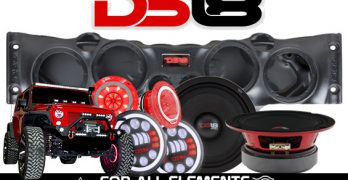 For a business to stay in business, it’s not enough to choose the right property at the right location—you also need to pick the right building or office lease.
For a business to stay in business, it’s not enough to choose the right property at the right location—you also need to pick the right building or office lease.
If you’re in the market for more office space, finding the right type of commercial lease is just as important as finding the right space.
Lease agreements are more complicated than a typical personal lease because they don’t just specify a monthly rent payment; they spell out how expenses will be split between a landlord and tenant.
It’s very important to understand the different types of commercial lease agreements before you start shopping for an office space or a building. Picking the wrong lease could put your business in financial uncertainty.
Commercial real estate leases may seem straightforward, but there are a lot of ways a landlord or property owner can split expenses on their commercial property.
For some types of commercial leases, tenants are responsible for only a flat monthly rent. This leaves the landlord to have to pay for taxes, insurance, maintenance, and other expenses.
It is far more common for a building lease agreement to have provisions outlining how the landlord will split the extra expenses with the tenant. This means you really need to fully understand that split before you sign off on a lease for commercial property.
Before you sign a commercial office lease, learn the different types of commercial leases.
Here is the 411 on a few Commercial Real Estate Property Leases.
Net Lease
A net lease adds a twist to how you pay rent. Net Leases require the tenant to pay both a monthly rent and a percentage of other expenses the landlord has to cover.
Expenses like:
- Property taxes,
- Property insurance,
- and Maintenance costs.
The portion of these expenses a tenant pays is based on how much space they’re renting.
How it’s calculated can be tricky, so bring in math, calculus, and physics expert to help out.
These leases are a little unpredictable for a tenant because their costs typically go up over time.
You may want to think long and strong on signing a Net Lease….those added costs add up.
To compound all this confusion on Net Leases, there three different types of net leases, each with a different division of expenses.
- Single net lease (N lease): In a single net lease, tenants are responsible for monthly rent and just one extra expense. This is usually a percentage of property taxes.
- Double net lease (NN lease): In a double net lease, the tenant is responsible for monthly rent and two other expenses: Most of the NN leases I have seen want the tenant to cover part of the property taxes and property insurance.
- Triple net lease (NNN lease): In the ‘good ol” triple net lease, the tenant is responsible for three major expenses on top of their monthly rent. In addition to a fixed-rent payment, the tenant will pay a share of property taxes, property insurance, and maintenance costs. Sometimes the tenant will have to pay a percentage of the building’s utilities in place of the maintenance cost.
Full-Service Lease (Gross Lease)
In this basic lease, the tenant is responsible for a fixed amount of rent and nearly nothing else.
Gross Lease or a full-service lease place the landlord responsible for property taxes, property insurance, maintenance costs, and utilities.
Expect a gross lease commercial workspace to charge a much higher monthly rent because the landlord is covering so many costs.
These are the type of leases shared workspaces, formerly known as Co-Working Space, offer. The popularity of these work centers has resulted in eyepopping monthly rents. You could be paying a lot each month for that free coffee and access to the pool table.
Might be wise to hire an agent will help you evaluate if the landlord is gouging the marketing or if the higher cost is at the best value for you and your business.
Modified Gross Lease
Modified gross leases are flexible leases that don’t fit the specific expense split of any other commercial lease.
This lease lets the landlord and tenant specify exactly who’s responsible for what.
A modified gross lease is customized to both landlords’ and tenants’ specific needs, but you have to read them carefully to be sure exactly which expenses each party is responsible for paying.
Hell or High Water Lease
The Absolute NNN Lease is often referred to as a bond-able lease or a hell or high-water lease meaning that the tenant is responsible for all of the expenses and repairs relating to the building including the roof and structure
This type of lease takes almost all financial responsibility off of the landlord.
This type of lease would be good for an established business looking to work an equity deal added onto the agreement that would state part of the rent would go towards the purchase of the building or property. Would make sense since the tenant is taking on paying for everything the landlord is responsible for paying as the owner of the property.
Like the triple net lease, tenants have to pay a fixed rent plus a share of property taxes, property insurance, and maintenance costs.
With an Absolute NNN lease, tenants are responsible for all maintenance, including major costs like roof replacement and structural repairs.
Percentage Lease
A Percentage Lease requires the tenant to pay a base rent as well as a specific percentage of their gross income. Usually, there is a limit or cap on the amount of gross income paid to the landlord.
In many cases, a percentage lease will not have any base rent, but the landlord will instead take a larger percentage of sales. The Percentage Lease is often used for short-term retail rentals.
Percentage leases are good for retailers that tend to have waves of seasonal income. This keeps their rent lower when business is slower.
A tenant needs to be mindful of the percentage of income owed to their landlord—an excessively high percentage could get in the way of business growth, or the landlord becoming an owner of the business.
Close Look at Office Space Lease Options
It is best to get a clear understanding of the type of commercial office space lease you are signing. It is crucial to the health of your business. Having your attorney readily available would be recommended.
Here are some pros and cons of the leases mostly used:
- Full-service leases are appealing and are what most Shared Workspace facilities use. They offer predictable expenses. Does away with the fluctuating costs that might surprise you. This option is very straightforward for tenants, who just have to keep up with a fixed monthly cost. The problem is, many Shared Workspaces and landlords who offer Full-Service Leases, are gauging the commercial real estate market. It is not illegal to do so. Do your homework on what the lease rate is for the surrounding buildings or for other space in the building. If the Sq Ft Rate for the Full-Service Lease is over double the sq ft rate for open space in the building..it might be time to move on or make an offer you are more comfortable paying.
- Net leases split expenses between the landlord and tenant, requiring tenants to pay a lower rent plus a portion of building expenses. This can be a good deal for tenants and landlords, but tenants need to be sure they can handle increasing (and sometimes unpredictable) expenses. If possible, check the building’s expense records for a few years. If they are going up or based on some expense that is going to go up, it might not be a good deal.
- Percentage leases can be an excellent deal for retailers, who will owe a lower base rent plus a percentage of gross sales. Having a lower rent during slow sales months can really help a business stay afloat. However, landlords get antsy if the percent of gross sales is lower than the cost the landlord has on the space being lease. You may be asked to renegotiate the lease.
- Modified gross leases are highly adaptable, but that means you’ll need to read the fine print closely to be sure you know exactly what you’re committing to for usually a longer-term.
Having a Private Office for your business is exactly what your consumers expect you to have. And, with so many businesses needing to move from the open shared workspaces to closed door environments there are a lot of business owners and executives looking to move their workforce into a more safe and healthy environment.
The deals are out there to be made. Just remember, the better deals will be based on longer-term leases. So, make sure you get the one that fits your brand’s image because you may be there for awhile.
Don’t ruin a good business by signing the wrong lease agreement.
Always read your lease agreement carefully and ask plenty of questions before you sign. Talk to your attorney if there is wording in the lease you do not understand.
And, as usual…..Let me know how I can help.











